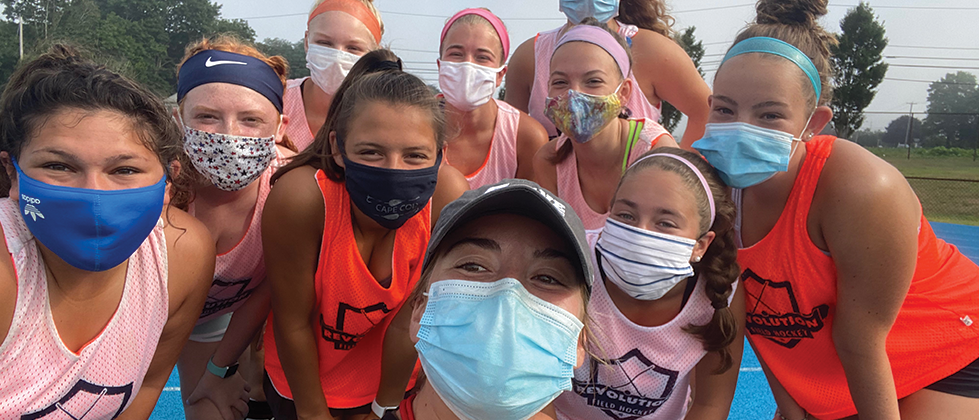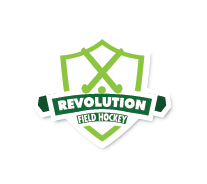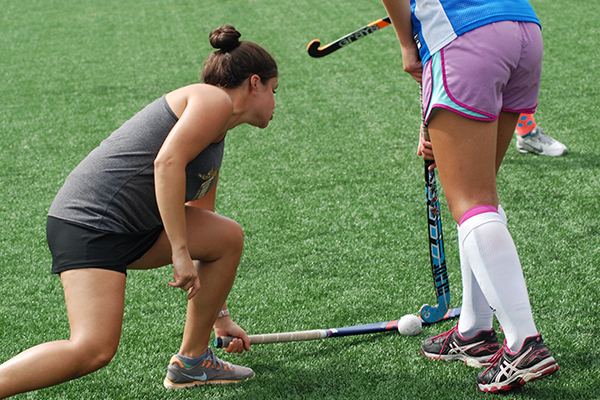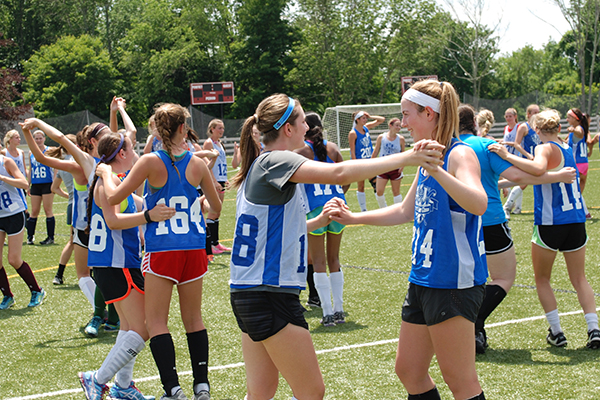Field Hockey Camp: COVID Safety Protocols and Policies to Know

Before COVID-19 went ahead and turned our lives upside down last year, one of our main goals at every Revolution Field Hockey Camp was to provide a top-notch experience with the best instruction around, all while doing it in a fun and safe environment. No matter how much life has changed since we conducted our first field hockey camp nearly 20 years ago, that goal has remained the same, and it’s taken on a whole new meaning as we continue to welcome campers by giving them something to look forward to during these crazy times.
At the core of it all, how we administer and the ultimate goal of our field hockey camps is still exactly the same as it’s been for the 40,000-plus players who have joined us in past years. Our camps are the only ones in the country that employs a staff that is Double-Goal Certified by the Positive Coaching Alliance. We’ll still be focusing on the following field hockey skills: dribbling, teamwork, passing and receiving, agility, ball control, footwork, shooting, scanning and tracking, defensive tackling, 3D skills, and positioning.
The biggest difference will be the COVID safety protocols and policies we’ve employed to make sure that everyone at camp — the players and coaches — feels as safe as possible.
Since we are proud to run more than 35 field hockey camps in 20 states nationwide, it’s important to be mindful of the overarching safety protocols from the Center for Disease Control and Prevention (CDC), along with the state and local protocols and regulations as it relates to youth sports. As the guidelines change for certain things, such as youth activities, gathering size, and social distancing, our policies, which can be viewed in full here, could change accordingly.
There are lots of protocols we adhered to throughout the summer of 2020 and plan on continuing to do in 2021, but here are some of the more important ones:
- Face masks are required for staff to wear at all times, except when they’re eating and drinking. Campers must have masks that are provided to them by their parents and they must be worn during check-in and check-out, as well as during orientation and closing ceremonies, if applicable.
- Speaking of check-in and check-out, we’ll do our best to make sure this experience has no contact. Parents must maintain six feet of social distancing, as well as avoid forming groups during and after camp. When it comes to attendance, a parent will verbally acknowledge their child is there and ready to play.
- We’re asking that parents avoid carpooling completely, along with washing/sanitizing a child’s clothing and equipment before and after each day of camp.
- We’re also asking parents to ensure their child is healthy each day before camp, which includes a temperature check (something we’ll also do prior to allowing a camper to enter).
- If one of our staff members determines a camper has a fever, parents will be called so they can be picked up. In order to return to camp, a camper must not have a fever (without the aid of fever-reducing medicine) for at least 24 hours.
As mentioned before, this is only a small number of the protocols we’ve put in place to run our camps in a safe and healthy environment. If you’d like to see all of them, check out this link. If you have any questions, don’t hesitate to reach out and ask.


